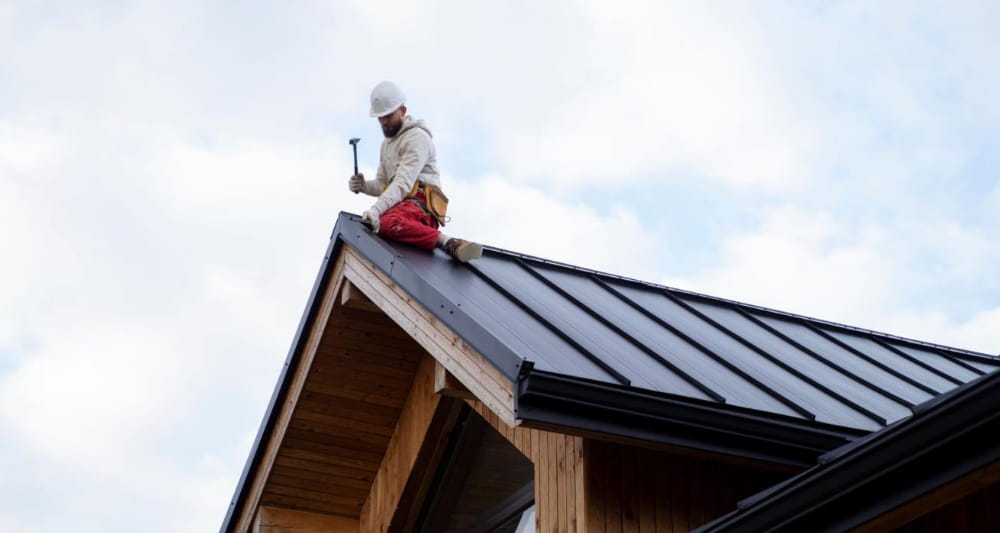Your roof is the first line of defence in protecting your home from the elements, but it’s often the most overlooked part of the house. If ignored, minor roof problems can escalate into expensive repairs and place your home’s structure and safety at risk. And that’s why routine roof upkeep matters—not just to protect your home better, but save you thousands in future repairs.
Thank you for reading this post, don't forget to subscribe!This guide will help you with a step-by-step roof maintenance checklist that includes DIY inspections, professional advice, seasonal tips, and ways to resolve common issues such as leaks and damaged shingles. This year-round checklist for homeowners and landlords alike will keep your roof in top condition.
Roof Inspection: DIY or Professional Roof Inspection?
A thorough roof inspection is essential before jumping into full-fledged maintenance. But are you going to do it yourself, or are you going to hire a professional? Let’s explore both options.
DIY Roof Inspections
If you’re comfortable with ladders and have the tools, a DIY inspection can be a cheap way to keep tabs on your roof’s health. While you are doing your inspection, also watch out for these signs of damage or wear:
Missing or damaged shingles: These leave your roof open to leaks.
Cracked or curled shingles: Typical with aging or weathered roofs.
Holes or loose flashing: Flashing around chimneys, vents or skylights should be tight.
Saggy areas of roof: This may mean issues with stability that should be addressed right away.
Moss, mold, or algae: These can damage or weaken your roof over the years.
If you’re reluctant to climb up ladders, use binoculars for a quick ground-level visual inspection. There’s much to evaluate without risking injury.
Hiring a Professional
But a professional roofing contractor inspection is recommended at least once a year. A contractor can spot problems the untrained eye might miss, such as internal water damage, tiny cracks in the underlayment, or poorly installed flashing. They also have the tools and skill to get safely onto roofs.
Cleaning Gutters and Maintaining Downspouts
Gutters and downspouts are critical to moving water away from your house. Clogged gutters can cause water to pool on your roof, possibly resulting in leaks or structural damage. Here’s how to care for them the right way:
Remove the Debris: Wearing gloves or using a gutter scoop, remove leaves, twigs, and dirt. Use a garden hose or gutter cleaning wand to facilitate debris removal.
Flush the Gutters: After the debris has been cleaned, flush the gutters with water to make sure that the system does not have any blockage.
Check Downspouts: Make sure water is flowing freely through the downspouts. Buildups or standing water might be signs of a clog.
Install Gutter Guards: They keep debris from entering the gutters, allowing water to flow, thus reducing your gutter cleaning frequency.
Ignoring your gutters can cause roof leaks, foundation damage and pests. Add this to your maintenance routine, especially after a heavy storm or fall when leaves are plentiful.

How to Identify and Fix Common Roof Problems
Detecting roofing problems early can cost you a lot in savings and save you major structural problems. With that in mind, here are the most common issues to search for and how to fix them.
Leaks
Laks are one of the most common roofing issues. Signs that a roof is leaking include water stains on your ceiling, mold growth or soft, damp patches on the attic floor.
How to Fix It:
For now, you can patch small leaks with roofing tape or sealant. For long-term solutions, a professional will generally need to replace damaged shingles or underlayment.
Damaged or Missing Shingles
Power storms or extreme climate can blow shingles off your roof, leaving your residence defenseless to drinking water injury.
How to Fix It:
Install cracked or lost shingles immediately. This is a simple enough DIY job if you have matching shingles and are comfortable on your roof.
Pooling Water
Pool water is particularly problematic for flat roofs, causing leaks and premature wear.
How to Fix It:
Put in new roof drains or materials to adjust the slope and help carry the water safely off your roof.
Tips for Roof Maintenance by Season
With each changing season, your roof faces unique challenges. Tailoring your maintenance regimen to meet these seasonal requirements will help keep your roof in top condition throughout the year.
Spring
- Clear the roof and gutters of winter storm debris.
- Inspect for damage caused by heavy snow or ice accumulation, particularly at flashing and vent areas.
- Get your roof ready for the rainy season – Schedule an inspection
Summer
- Check for sun damage, such as cracked or faded shingles.
- If you see any moss, algae, or lichens on the roof tiles, again remove using a specially formulated roof cleaning solution.
- Make sure your attic is ventilated so it doesn’t get too hot and wreak havoc on your roof structure.
Fall
- This time of year, clean out gutters well to avoid clogs from falling leaves.
- An overhanging branch near your roof by trimming it, to reduce the risk of fallen debris.
- Give it one last once-over before winter hits, looking for loose flashing and shingles.
Winter
- Prevent them by regularly checking for and removing ice dams to stop water from pooling and freezing on your roof.
- Check attic insulation levels to make sure heat isn’t lost through the roof (leading to the snowmelt that can cause ice dams).
- Steam in your shingles during freezing conditions — do not walk on your roof.
The Benefits of Proactive Roof Care
Investing in consistent roof maintenance is an investment in your home, and your peace of mind against sudden repair costs. A properly cared-for roof can last 20 to 30 years or more, depending on the material. This is how regular care makes a difference:
Enhance Longevity: Simple maintenance can keep smaller problems from turning into big and expensive ones.
Preserves Your Home: A solid, leak-free roof keeps your family safe and comfortable.
Cost Efficient: Repairs and inspections cost far less than replacement roof systems.
Boost Property Value: Roof condition matters to home buyers. It increases your home resale value.
Following these key steps to protect your roof will allow you sleep soundly when storms go through, confident that your home is adequately protected from the elements.



